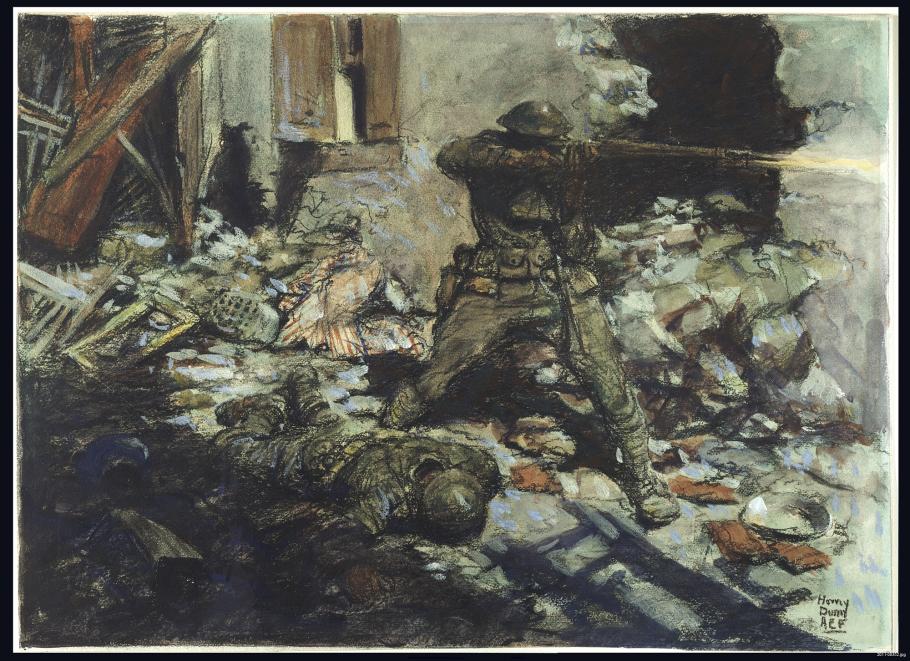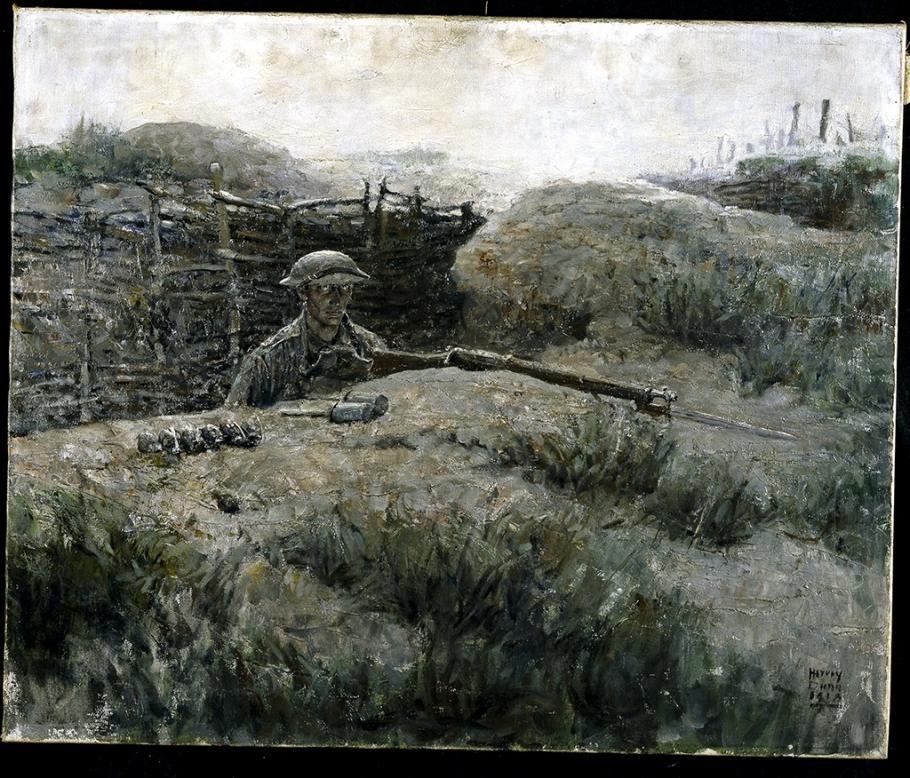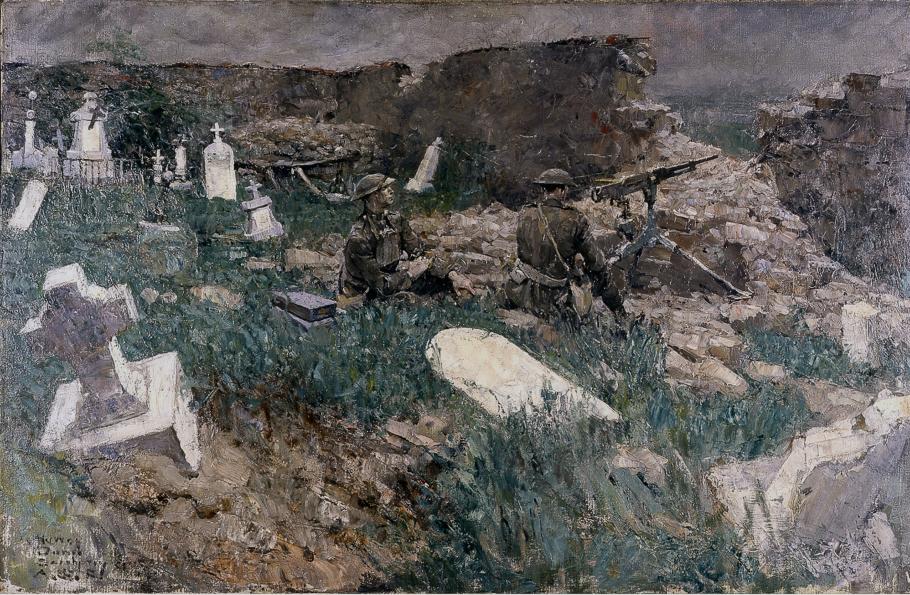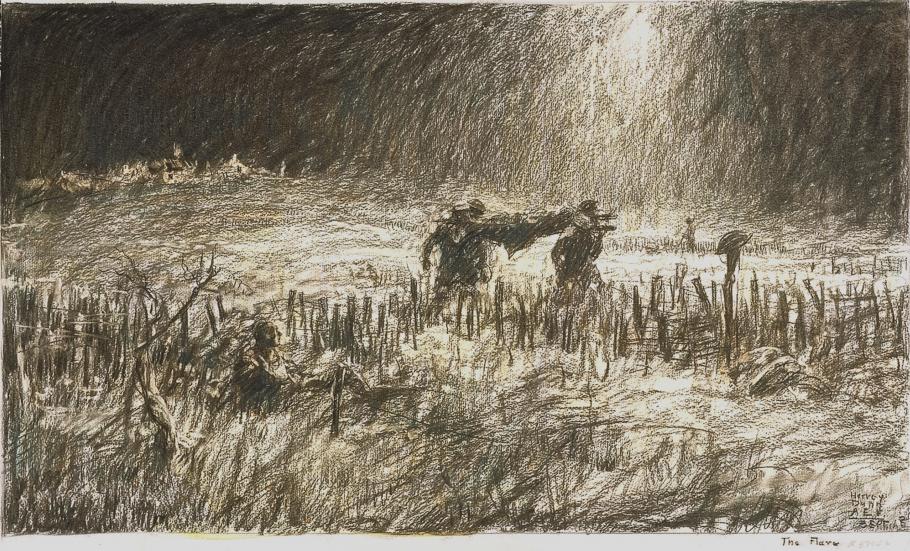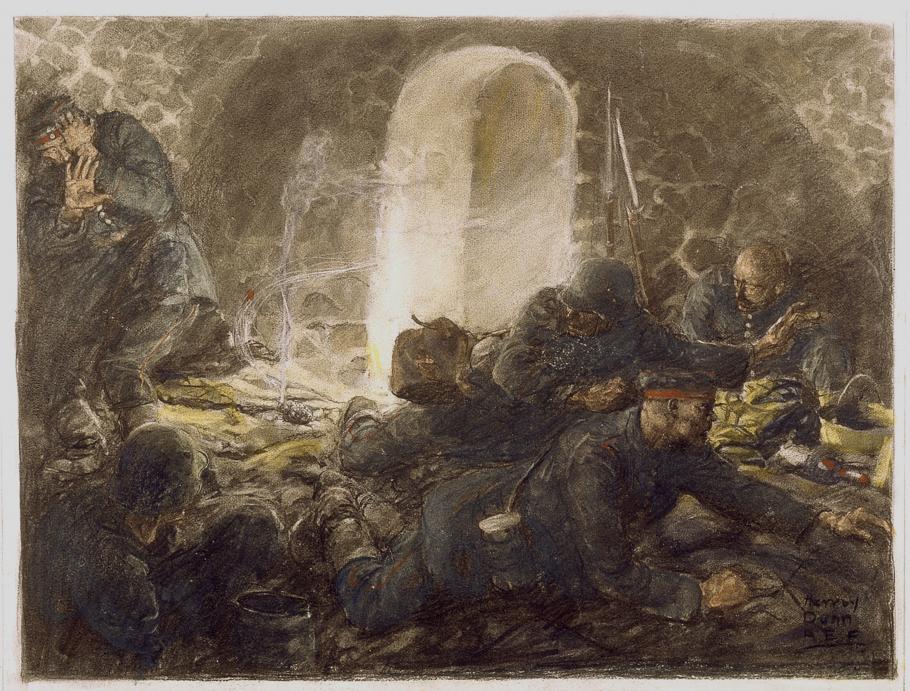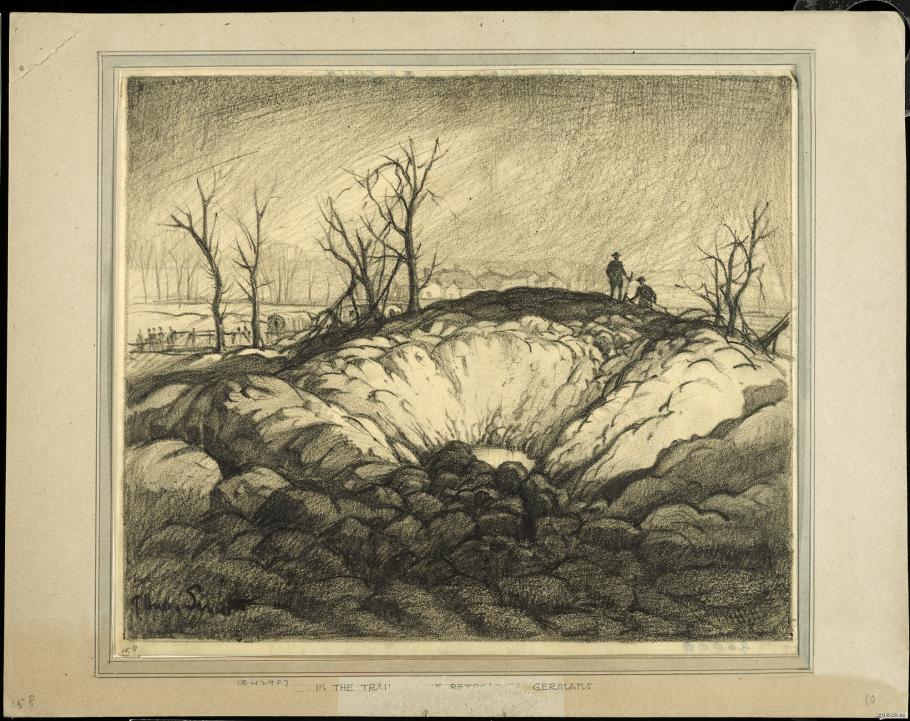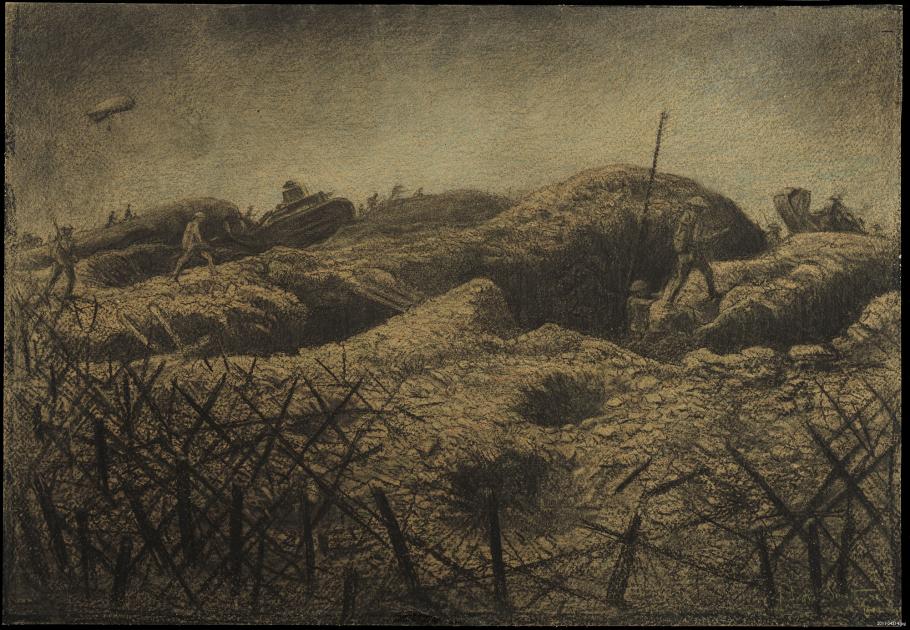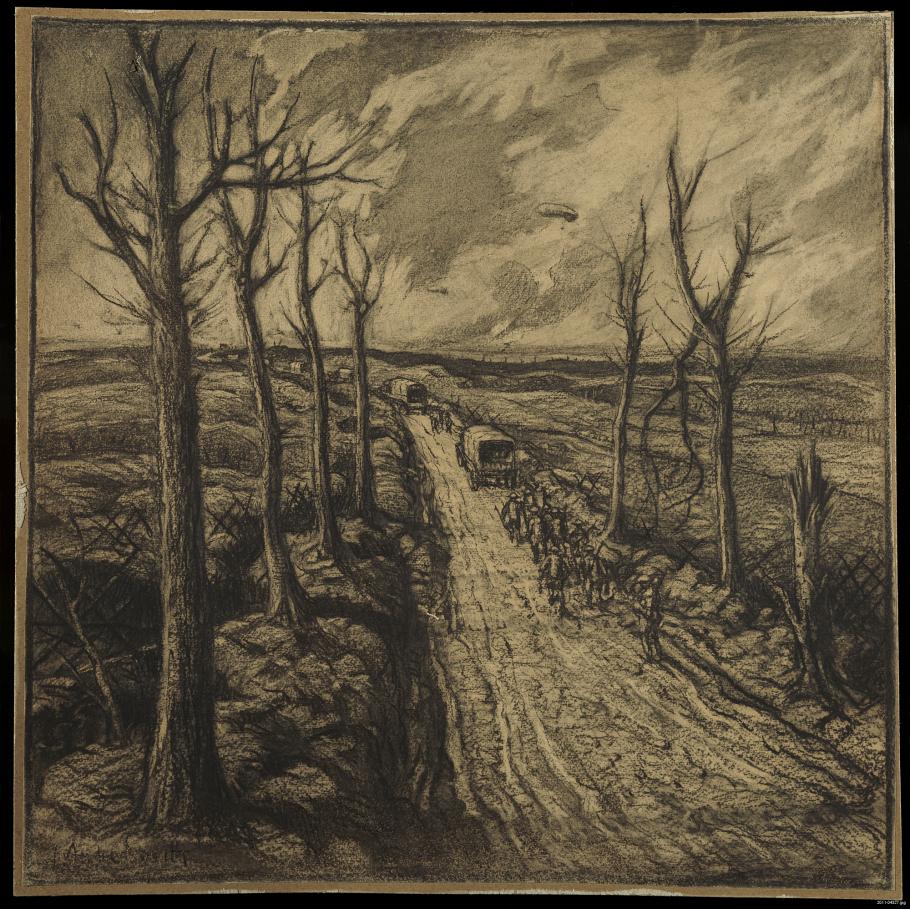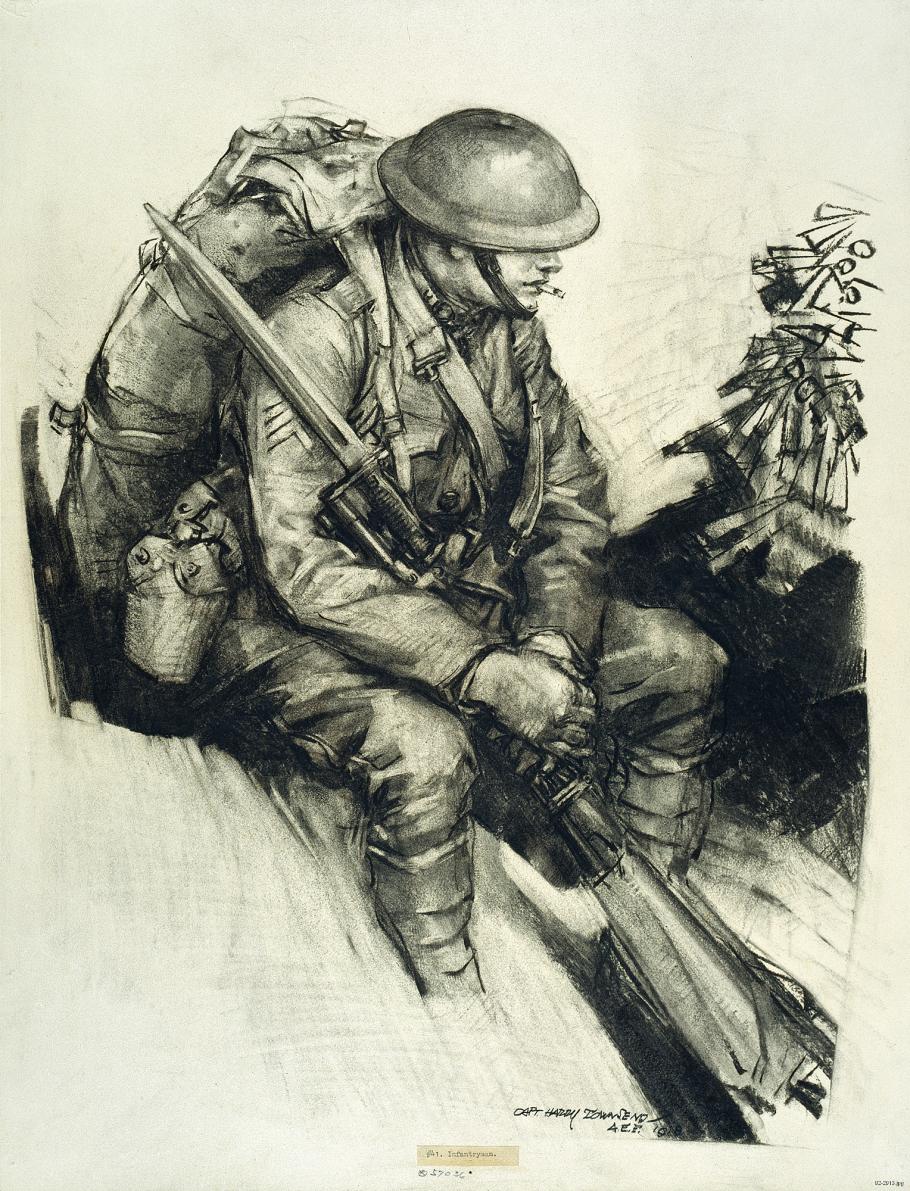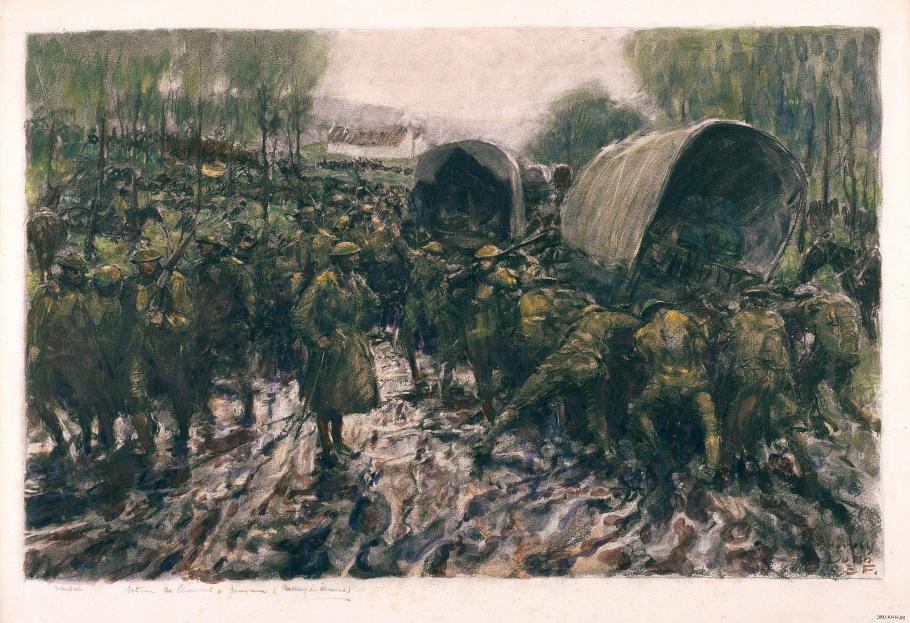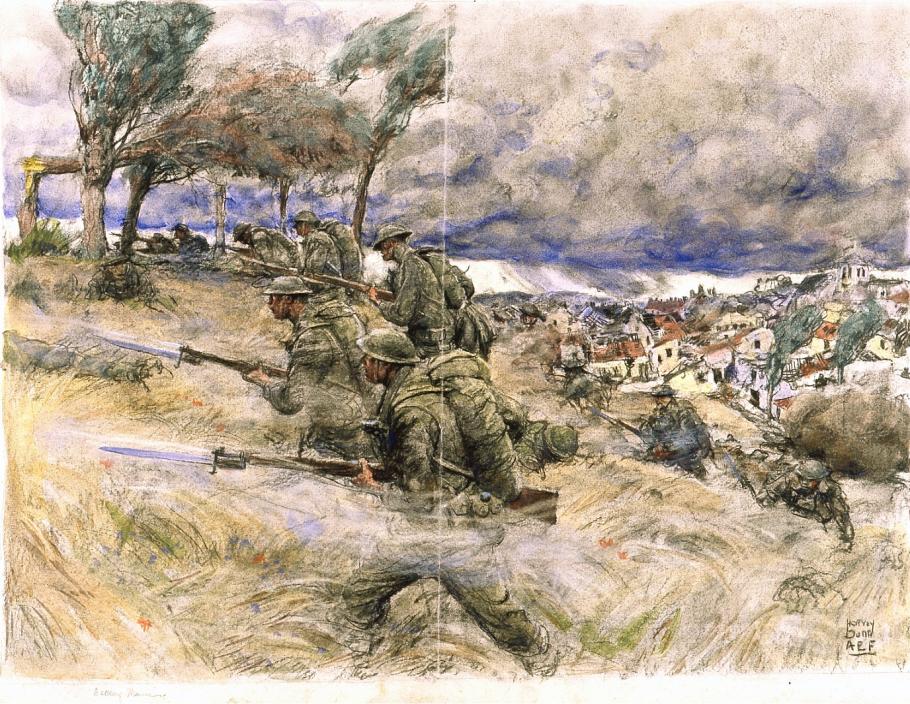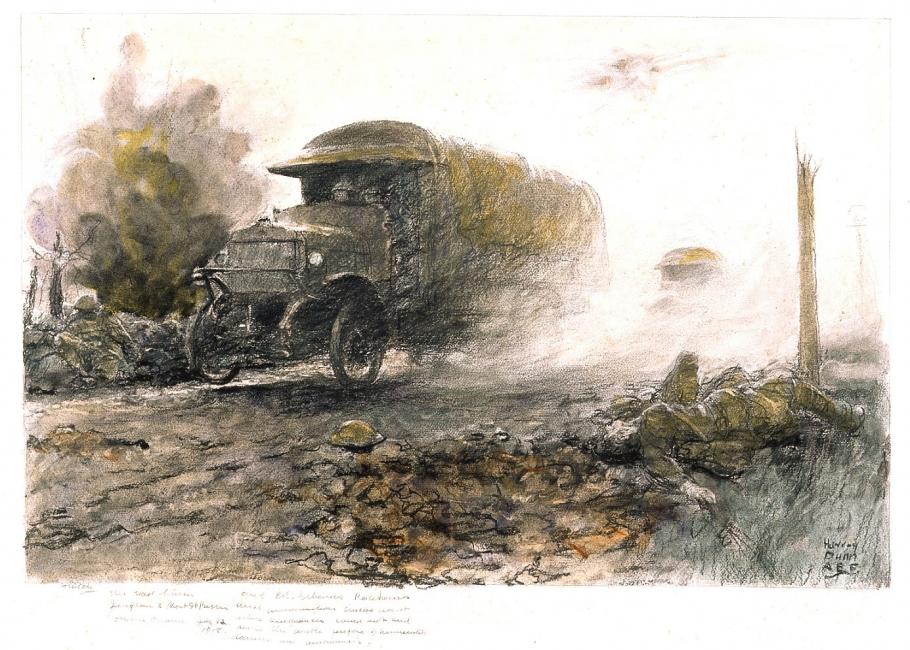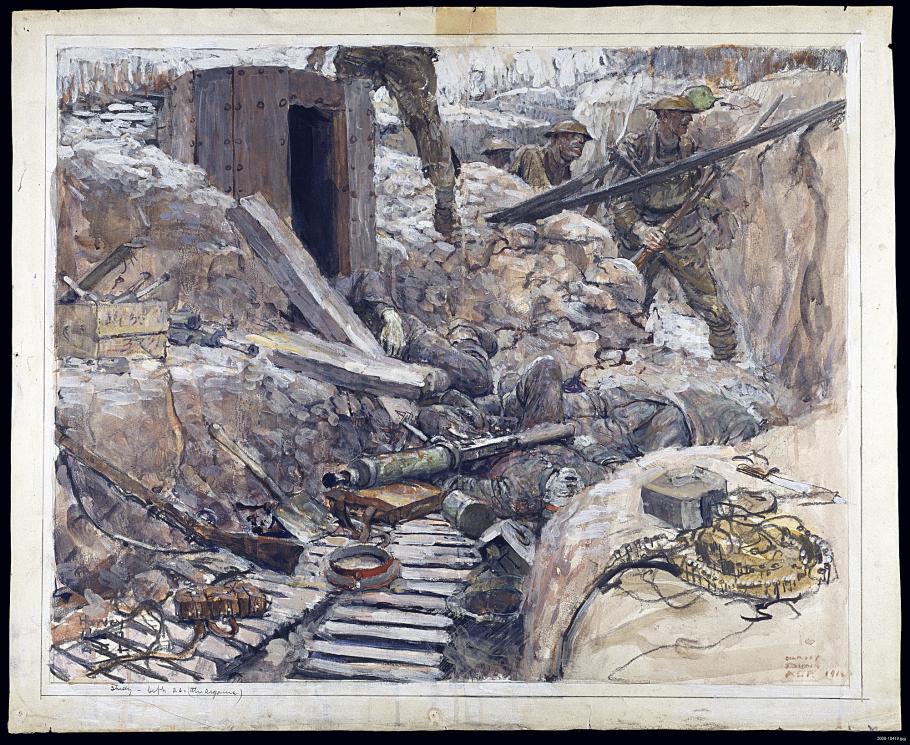

The Battlefield
Apr 06, 2017
The AEF artists had great freedom to travel about, affording them broad access to events, including combat. Although devoid of the more shocking realities of war that photography captured, their depictions of the battlefield powerfully convey a sense of immediacy and on-the-spot observation. Their art provides a window on their role as both recorders of history and as first-hand participants in that history. Most of the AEF artists were trained and worked as professional illustrators before the war. Their approach placed the viewer on the scene in ways not common in earlier war art.
Street Fighting
Harvey Thomas Dunn
Watercolor, charcoal, pastel on paper, 1918
Over the Top by J. André Smith, Charcoal on paper, 1918
Over the Top
J. André Smith
Charcoal on paper, 1918
The phrase “going over the top,” among the most famous from World War I, referred to climbing out of the protective trenches to attack the enemy across open ground. This area between the opposing trenches was referred to as “no man’s land” because it was pummeled by artillery bombardment and swept by machine gun fire.
The AEF WWI war art collection currently is held by the Smithsonian’s National Museum of American History, Division of Armed Forces History, from which the artworks in this exhibition are on loan.
Related Topics
You may also like

We rely on the generous support of donors, sponsors, members, and other benefactors to share the history and impact of aviation and spaceflight, educate the public, and inspire future generations. With your help, we can continue to preserve and safeguard the world’s most comprehensive collection of artifacts representing the great achievements of flight and space exploration.
